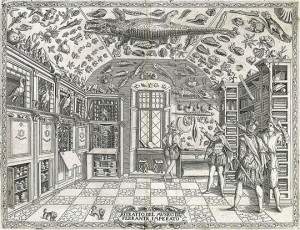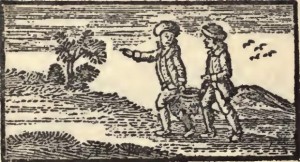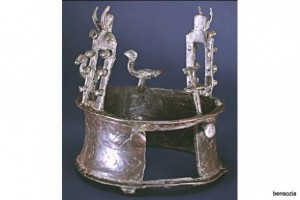Lost Libraries: Are We Burning The Library at Alexandria Every Single Day?
Welcome to the digital age – where people are tossing their book collections in the garbage, keeping their precious family photos on hard drives, and storing all of their music in the “cloud”. We are presently dooming ourselves to a ‘digital dark age’ of such immense and tragic proportions that the burning of the Library at Alexandria is a trifle in comparison. Perhaps you’ve noticed that the floppy disks you used just a few years ago are no longer usable? All of those files, lost. Digital media itself may endure the years, but the players with which you access that media changes with the wind…
Are you panicking yet?
Perhaps we need to take on the “Renaissance preoccupation” with lost intellectual treasures?

Engraving from the Dell’Historia Naturale (1599) showing Naples apothecary Ferrante Imperato’s cabinet of curiosities, the first pictorial representation of such a collection
…”In the latter half of the 17th century the English polymath Thomas Browne wrote Musaeum Clausum, an imagined inventory of ‘remarkable books, antiquities, pictures and rarities of several kinds, scarce or never seen by any man now living’. Claire Preston explores Browne’s extraordinary catalogue amid the wider context of a Renaissance preoccupation with lost intellectual treasures…”
See more here at the Public Domain Review.
Share


